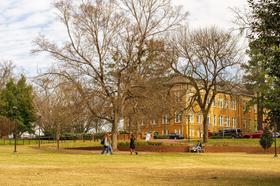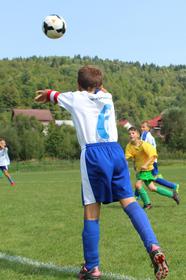For the 2025-26 school year, there are 7 public schools serving 2,975 students in 02861, RI (there are , serving 490 private students). 86% of all K-12 students in 02861, RI are educated in public schools (compared to the RI state average of 86%).
The top ranked public schools in 02861, RI are Flora S. Curtis School, Curvin-mccabe School and Potter-burns School. Overall testing rank is based on a school's combined math and reading proficiency test score ranking.
Public schools in zipcode 02861 have an average math proficiency score of 22% (versus the Rhode Island public school average of 29%), and reading proficiency score of 23% (versus the 33% statewide average). Schools in 02861, RI have an average ranking of 3/10, which is in the bottom 50% of Rhode Island public schools.
Minority enrollment is 69% of the student body (majority Hispanic), which is more than the Rhode Island public school average of 49% (majority Hispanic).
Best 02861, RI Public Schools (2025-26)
School
(Math and Reading Proficiency)
(Math and Reading Proficiency)
Location
Quick Facts
Rank: #11.
Flora S. Curtis School
(Math: 50-54% | Reading: 30-34%)
Rank:
Rank:
7/
Top 50%10
582 Benefit Street
Pawtucket, RI 02861
(401) 729-6252
Pawtucket, RI 02861
(401) 729-6252
Gr: PK-5 | 336 students Student-teacher ratio: 14:1 Minority enrollment: 63%
Rank: #22.
Curvin-mccabe School
(Math: 30-34% | Reading: 20-24%)
Rank:
Rank:
5/
Bottom 50%10
466 Cottage Street
Pawtucket, RI 02861
(401) 729-6258
Pawtucket, RI 02861
(401) 729-6258
Gr: K-5 | 331 students Student-teacher ratio: 12:1 Minority enrollment: 73%
Rank: #33.
Potter-burns School
(Math: 28% | Reading: 24%)
Rank:
Rank:
5/
Bottom 50%10
973 Newport Avenue
Pawtucket, RI 02861
(401) 729-6250
Pawtucket, RI 02861
(401) 729-6250
Gr: K-5 | 425 students Student-teacher ratio: 14:1 Minority enrollment: 60%
Rank: #44.
Nathanael Greene School
(Math: 25-29% | Reading: 15-19%)
Rank:
Rank:
4/
Bottom 50%10
285 Smithfield Ave Pawtucket
Pawtucket, RI 02861
(401) 729-6260
Pawtucket, RI 02861
(401) 729-6260
Gr: PK-5 | 404 students Student-teacher ratio: 13:1 Minority enrollment: 81%
Rank: #55.
Fallon Memorial School
(Math: 18% | Reading: 27%)
Rank:
Rank:
4/
Bottom 50%10
62 Lincoln Avenue
Pawtucket, RI 02861
(401) 729-6254
Pawtucket, RI 02861
(401) 729-6254
Gr: PK-5 | 549 students Student-teacher ratio: 12:1 Minority enrollment: 67%
Rank: #66.
Lyman B. Goff Middle School
(Math: 15% | Reading: 24%)
Rank:
Rank:
3/
Bottom 50%10
974 Newport Avenue
Pawtucket, RI 02861
(401) 729-6500
Pawtucket, RI 02861
(401) 729-6500
Gr: 6-8 | 630 students Student-teacher ratio: 14:1 Minority enrollment: 61%
Rank: #77.
Elizabeth Baldwin School
(Math: 10-14% | Reading: 19%)
Rank:
Rank:
3/
Bottom 50%10
723 Central Avenue
Pawtucket, RI 02861
(401) 729-6264
Pawtucket, RI 02861
(401) 729-6264
Gr: K-5 | 300 students Student-teacher ratio: 12:1 Minority enrollment: 87%
Frequently Asked Questions
What are the top ranked public schools in 02861, RI?
The top ranked public schools in 02861, RI include Flora S. Curtis School, Curvin-mccabe School and Potter-burns School.
How many public schools are located in 02861?
7 public schools are located in 02861.
What percentage of students in 02861 go to public school?
86% of all K-12 students in 02861 are educated in public schools (compared to the RI state average of 86%).
What is the racial composition of students in 02861?
02861 public schools minority enrollment is 69% of the student body (majority Hispanic), which is more than the Rhode Island public schools average of 49% (majority Hispanic).
Recent Articles

School Vouchers 2025: Updated Pros and Cons
A 2025 update on school vouchers, including benefits, drawbacks, enrollment trends, and how vouchers affect public and private education.

The Role of Arts in Public Schools (2025 Update)
Explore why arts education remains vital in U.S. public schools, with updated data, new policy context, and insights for parents, students, and educators.

The Role of Sports in Public Schools in 2025
How sports in public schools shape learning, health, and community in 2025, with updated data, trends, and expert insights.
